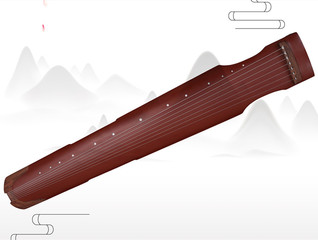Ancient Chinese metal instruments
Bronze casting, one of the great technological achievements of the Shang and Zhou dynasties, was employed primarily for construction of ritual implements such as vessels and bells. There is quite strong etymological and structural evidence to suggest that the Chinese clapperless bells nao and yong may have evolved from(or functioned simultaneously as) grain scoops. Other unmistakable associations between ritual instruments and agricultural practices will be cited below. Some bells, such as the elongated zheng(not the zither), were employed as signaling instruments on the battlefield, while others, such as the more standard zhong and bo, were used to punctuate ritual melodies in the large court orchestras.

Unlike Western bells, outer surfaces on Chinese zhong bells are typically decorated with raised rectangular ribs, repetitive claw-like, horn-like, or otherzoomorphic designs and clusters of decorative nipples around each bell, usually four clusters of nine each. When arranged in tuned sets, bells are referred to as bianzhong(arranged zhong). Unearthed sets from the Zhou and other early periods are of varying numbers(thirteen, fourteen, twenty-four, sixty-four,etc.), comprised of different-sized bells with concave mouths and leaf-shaped cross sections, suspended obliquely (if with shanks) or vertically (if with loops).
From at least the twelfth century onward, the number, type, and arrangement of bell sets became more or less standardized at sixteen barrel-shaped bells of the same external size, suspended vertically by loops.
Single bells, known as bozhong, are generally larger than bianzhong. Ancient bozhong usually have flat mouths and elliptical or round cross sections, their outer surfaces very elaborately, decorated with abstract zoomorphic designs (including crouching tigers in high relief). On such bells, hanging loops are often in the shape of dragons or other auspicious animals. Largest among the bell types still initual usage is the yongzhong, a single, oversized clapperless bell.
Yong seems to be an onomatopoeic term (like zhong) of not very precise historical meaning, though generally referring to the largest of bells. Scholars believe that the yong bell was derived from the large Shang nao bell.
In the Confucian ritual, the various bells maintain different functions;bianzhong bells are used to play melodies(together with winds and strings); the medium-sized bozhong punctuates the hymn phrases; and the yongzhong is struck to signal the commencement of the ceremony.




